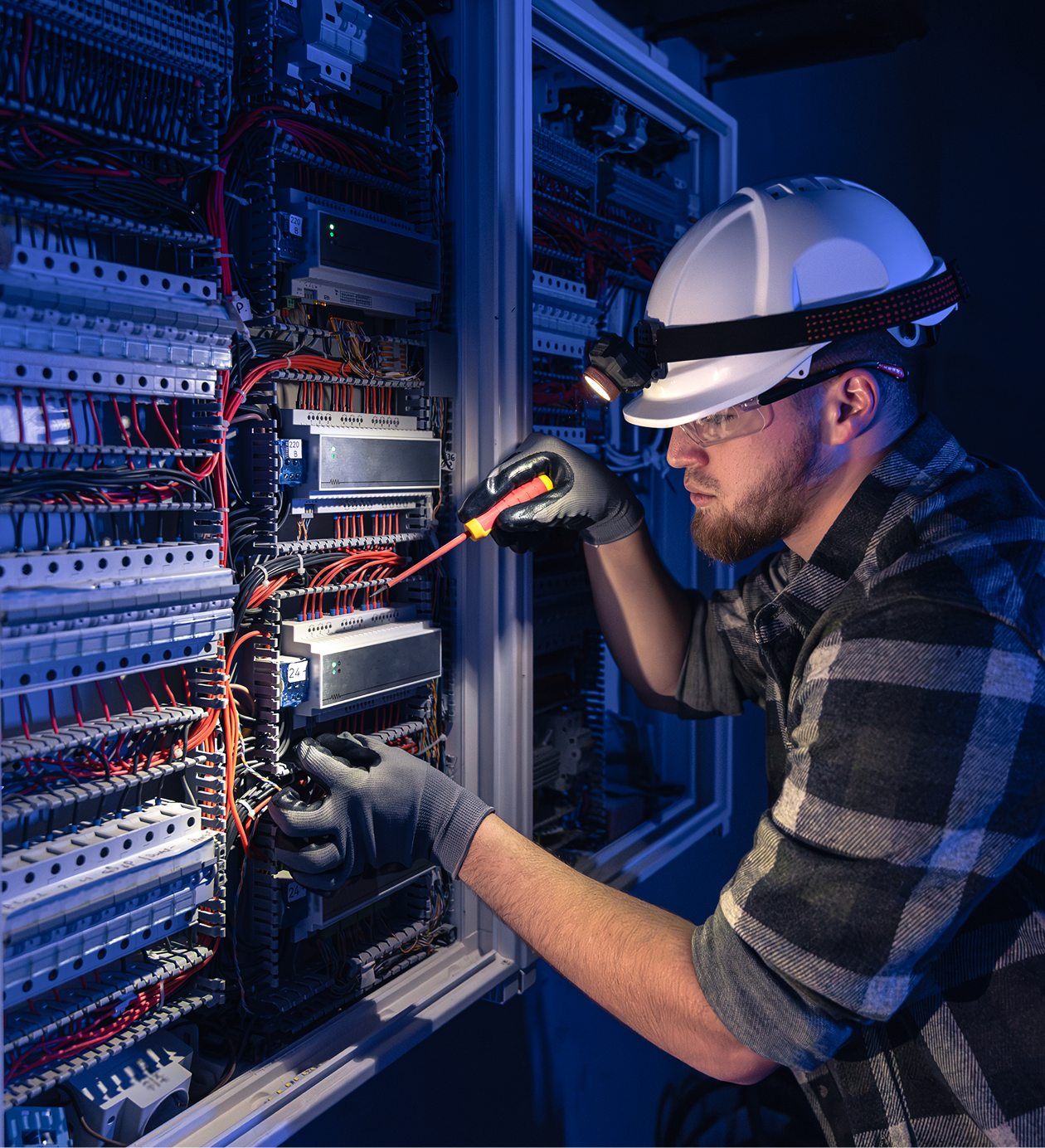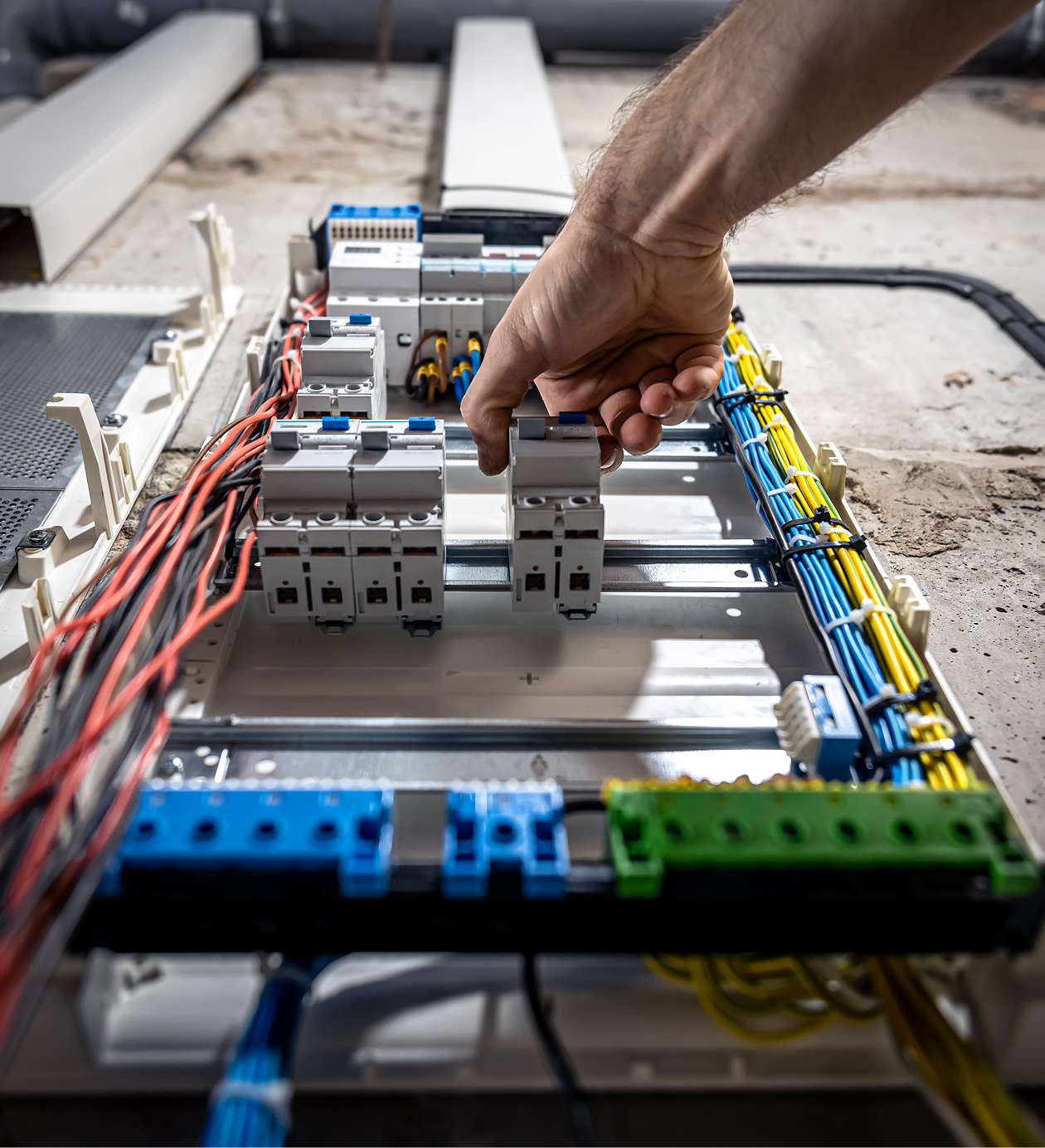EICR Certification | Electrical Safety & Compliance
Get Best Offers On Customized Designs!
What Is an EICR Certificate?
An Electrical Installation Condition Report (EICR) is a vital document that ensures a property’s electrical systems are safe and comply with UK regulations. It identifies deterioration, damage, and potentially hazardous conditions within the wiring systems, helping to prevent electrical faults and fire risks.

Key Features of an EICR:
- Visual Inspections: Examines sockets, switches, consumer units, and visible wiring.
- Circuit Testing: Identifies faults, overloads, and potential hazards.
- Legal Compliance: Mandatory for landlords every 5 years or at the start of a new tenancy.
- Safety Assurance: Enhances tenant safety and reduces the risk of electrical fires.
Having an up-to-date EICR in London is not just a legal requirement—it’s a key part of responsible property management that protects lives and ensures peace of mind.

What Is the EICR Certificate Cost?
The cost of an EICR Report in the UK depends on the size and complexity of the property. Prices typically start at £120 for smaller properties, with additional charges for larger homes or commercial spaces. Factors influencing the cost include:
- Number of Circuits: More circuits require additional testing.
- Property Size: Larger properties take longer to inspect.
- Remedial Work: If faults are found, additional costs may apply for repairs and re-testing.

What does an EICR Do?
An EICR serves as a comprehensive evaluation of your property’s electrical system. It:
- Identifies Faults: Detects issues like outdated wiring, overloaded circuits, and improper installations.
- Ensures Compliance: Verifies that the system meets BS 7671 regulations.
- Prevents Hazards: Reduces the risk of electrical fires, shocks, and system failures.
- Provides Documentation: Offers proof of compliance for audits, insurance claims, and tenant safety.

Why is an EICR Certificate important?
- 1. Legal Obligation
Landlords must comply with UK regulations by having their property’s electricity tested every 5 years or at the start of a new tenancy.
- 2. Protect Lives
Identifies risks such as electric shocks, faulty wiring, and fire hazards before they cause harm.
- Early Fault Detection
Catches small issues early, preventing costly repairs and system failures.
- Tenant Safety
Ensures tenants live in a safe environment, enhancing your credibility as a responsible landlord.
- Updated Standards
Guarantees your wiring meets the latest BS 7671 regulations and safety codes.
- Insurance Approval
Many insurance claims are rejected if a valid EICR is not in place. Stay protected.
- Peace of Mind
Rest easy knowing your property is electrically sound and certified.
- Landlord Reputation
Demonstrates your commitment to tenant safety and compliance.

Electrical Installation Certificate
Our qualified electricians deliver precise Electrical Installation Condition Reports (EICR) to guarantee your property’s electrical safety.
Design of the Week
Rubber Print Your T-Shirt


New T-shirt Edition
Customize Plain Colors
How does EICR work?
The EICR process involves a certified electrician conducting a thorough inspection of your property’s electrical system. Here’s how it works:
- Visual Inspection: Examines sockets, switches, consumer units, and visible wiring for signs of wear or damage.
- Circuit Testing: Tests the integrity of circuits, including insulation resistance, earth continuity, and polarity.
- Fault Classification: Identifies issues and categorizes them using standardized error codes (C1, C2, C3, F1).
- Report Issuance: Provides a detailed report highlighting faults and recommendations for remedial work.

What happens if my EICR fails?
If your EICR fails, it means your property’s electrical system does not meet the minimum safety standards. Common reasons for failure include:
- Outdated Wiring: Old systems that no longer comply with regulations.
- Improper Circuit Protection: Lack of RCDs or faulty breakers.
- Overloaded Systems: Circuits unable to handle modern electrical demands.
- Exposed Components: Wiring or connections that pose fire or shock risks.
- Next Steps:
- Address Faults Immediately: It’s a legal requirement for landlords to resolve issues promptly.
- Remedial Work: Our certified electricians can carry out repairs and upgrades.
- Re-Testing: Once faults are corrected, a follow-up inspection will issue a ‘Satisfactory’ certificate.

EICR error codes explained
- Code 1 (C1): Immediate danger—urgent repair required to prevent injury or fire.
- Code 2 (C2): Potential danger—action needed within 28 days to remain compliant.
- Code 3 (C3): Improvement recommended—no immediate danger, but upgrades suggested.
- Code F1: Further investigation required—uncertainty that needs additional testing.

How can I improve my Electrical Safety Inspection?
- Schedule Regular Inspections: Don’t wait for your certificate to expire—proactively identify and resolve issues.
- Perform Visual Checks: Inspect sockets, switches, and wiring for signs of wear or damage.
- Upgrade Outdated Systems: Replace old fuse boxes with modern consumer units equipped with RCD protection.
- Hire Certified Electricians: Ensure all work is carried out by NICEIC or NAPIT-certified professionals.
- Educate Tenants: Teach proper electrical usage and discourage overloading circuits.

Frequently Asked Questions (FAQs)
- An EICR certificate is a report that assesses the safety and compliance of your property’s electrical system.
EICRs are required every 5 years or at the start of a new tenancy for rental properties.
A certified electrician inspects all fixed electrical components, conducts tests, and identifies any faults or risks.
- C1: Immediate danger, requires urgent action.
- C2: Potential danger, action needed within 28 days.
- C3: Improvement recommended, not mandatory.
- F1: Further investigation required.
- You’ll receive a report detailing the faults. Remedial work must be completed to achieve compliance.
- Prices start at £120, with additional charges for larger properties or complex systems.
- No, all repairs must be carried out by a certified electrician to ensure compliance.
- While not legally required for homeowners, it’s highly recommended for safety and insurance purposes.
- Inspections typically take 1-3 hours, depending on the property size.
- Contact us via phone, email, or our website to schedule your inspection at a convenient time.
